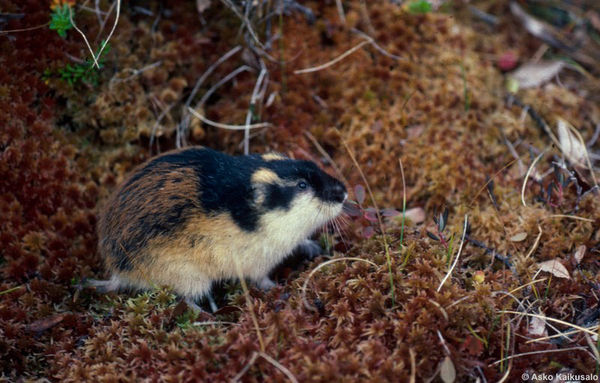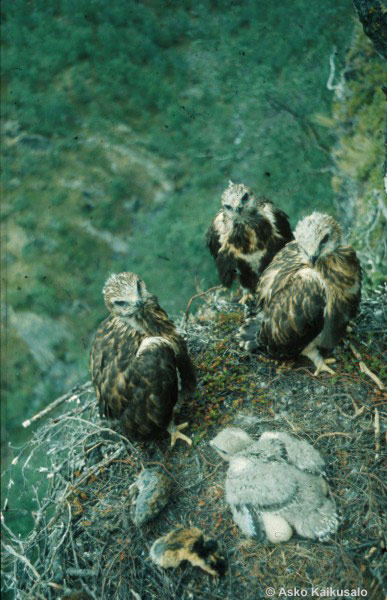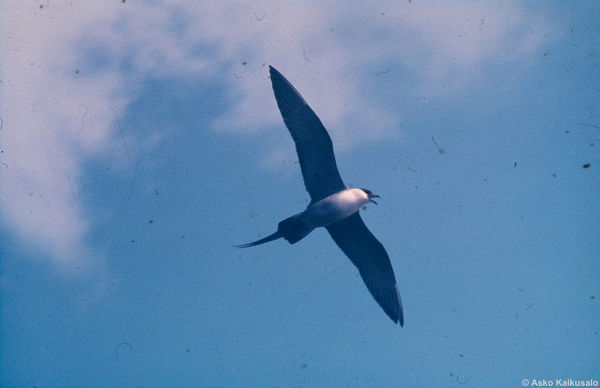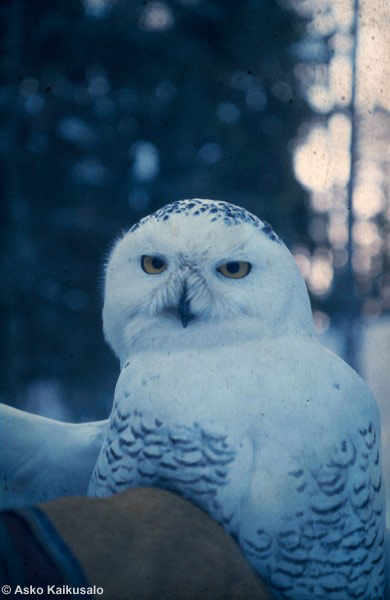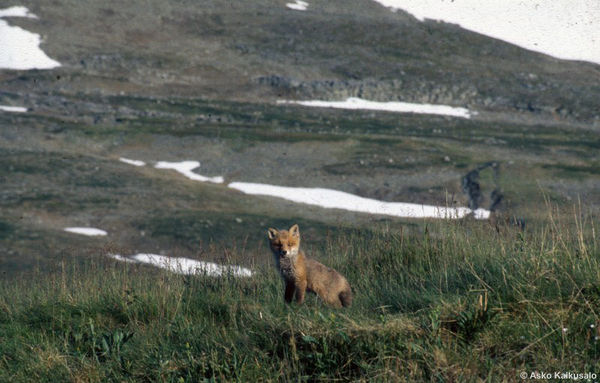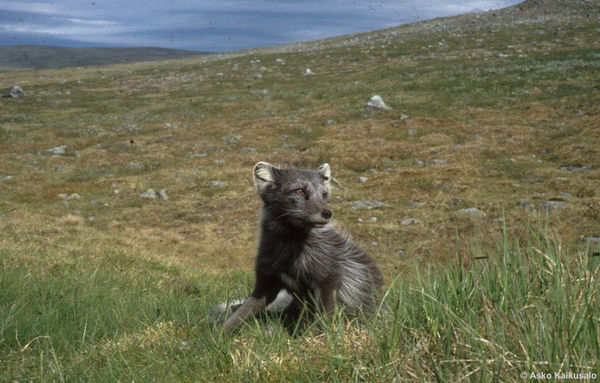Lemming
Sopuli
Tunturisopuli (Lemmus lemmus) on ruskean, mustan ja keltaisen kirjava myyriin kuuluva pikkujyrsijä.
Tunturisopulin pää ja selän etuosa ovat mustat. Keskellä selkää ja molemmilla kyljillä kulkevat mustat juovat takaosaan asti. Muuten tunturisopulin kyljet ovat kellanruskeat ja vatsapuoli vaalea. Tunturisopulin olemus on pyöreä, lyhyt häntä ja pienet korvat ovat vaikeasti erotettavissa.
Tunturisopulia tavataan normaalivuosina Norjan, Ruotsin ja Suomen korkeimmilla tunturialueilla. Kannan huippuvuosina tunturisopulit voivat kuitenkin vaeltaa jopa Metsä-Lappiin saakka. Tunturisopulit viettävät talven tunturien huippujen lumenviipymäalueilla, joissa lunta voi olla kolmekin metriä. Keväällä lumien sulaessa tunturisopulit vaeltavat tunturia alas. Kesällä tunturisopulit elävät tunturien rinteiden rehevissä purokosteikoissa ja niityillä. Syksyllä tunturisopulit vaeltavat taas takaisin ylös aina tunturin ylimmille paljakka-alueille saakka talven viettoon. Normaalivuosina tunturisopulit pysyvät koko ajan puurajan yläpuolella korkealla tunturissa. Tunturisopuli käyttää ravinnokseen lähinnä sammalia, mutta kesäisin myös jonkin verran saroja ja heiniä.
Tunturisopulit lisääntyvät normaalivuosina koko kesän ajan. Kesän ensimmäiset tunturisopulit syntyvät toukokuussa ja siitä eteenpäin uusia poikueita voi tulla kuukauden välein. Nuoret tunturisopulit tulevat lisääntymisikään noin kuukauden ikäisinä. Tunturisopuli saa tavallisesti 3-9 poikasta. Tunturisopulin pesä sijaitsee varvikossa, kolossa tai muussa suojaisessa paikassa. Paksun lumipeitteen alla tunturisopulit voivat lisääntyä talvellakin. Lumen alla lämpötila on lähellä nollaa ja poikasia voi syntyä samassa tahdissa kuin kesälläkin. Hyvään talvilisääntymiseen tarvitaan sekä hyvä ravintotilanne että paksu lumikerros.
Tunturisopulien määrän noustessa hyvän talvilisääntymisen ja edelleen jatkuvan kesälisääntymisen aikana, tunturisopuleille ei enää riitä normaalivuosien vaellus alas ja ylös tunturin rinnettä. Jos tunturisopuleita on jo syksyllä paljon tunturisopulit eivät enää palaakaan ylös tunturin rinnettä vaan jatkavat vaellustaan alaspäin tunturikoivikkoon. Mikäli lisääntyminen edelleen jatkuu tunturikoivikossa, tunturisopulien täytyy jatkaa vaellustaan eteenpäin ja lopulta tunturisopulit voivat päätyä Metsä-Lappiin asti. Tunturisopulien vaellus johtuu liikakansoituksesta. Kaikille tunturisopuleille ei ole tilaa ja ravintoa ja tunturisopulit joutuvat etsimään uusia elinalueita. Tunturisopulit eivät vaella joukkoina vaan yksittäisinä eläiminä. Suuri määrä tunturisopuleita käyttää vaeltaessaan samoja reittejä, jolloin tuntuu kuin tunturisopulit vaeltaisivat yhtenäisenä joukkona. Tunturisopuli on hyvä uimari ja voi tyynellä säällä uida neljän kilometrin matkan, mutta tuulisella säällä tunturisopulit hukkuvat helposti ja tunturisopuleita voi löytyä rannalta kuolleena suuria määriä. Suurvaelluksen päätyttyä kaukaiset tunturisopulit kuolevat ja jäljelle jäävät vain tunturien lakien yksilöt. Aikaisemmin tunturisopulien kannanvaihtelua pidettiin muiden myyrien tavoin nelivuotisena, mutta uusimmat tutkimukset ovat osoittaneet, että tunturisopuleilla kannanvaihtelu ei ole yhtä säännöllistä. Suomessa viimeisin suuri tunturisopulivaellus oli 1970.
Tunturisopulin vihollisia ovat linnuista piekana
(haukat), tunturikihu ja tunturipöllö (pöllöt). Nisäkkäistä tunturisopuleita saalistavat kettu (kettu), naali (naali), kärppä ja lumikko (näätäeläimet). Monien petojen lisääntyminen on selvästi rytmitetty tunturisopulien runsauteen ja esimerkiksi tunturipöllöä ei edes tavata alueelta jossa ei ole tunturisopuleita.Sisällysluettelo: Luonto
Lemming
Norway lemming (Lemmus lemmus): a small rodent belonging to the Cricetidae family.
It has variegated colours of brown, black and yellow. Black stripes run along its back and sides to the rear. Otherwise the sides are yellowish brown and the belly whitish. It is rotund in form with a short tail and small ears that are difficult to distinguish.
In normal years the Norway lemming is found in the highest fell areas of Norway, Sweden and Finland. However, in years when the population is large, Norway lemmings may migrate as far south as Forest Lapland. Lemmings spend the winter in the snowy areas around the summits of the fells, where the snow may be three metres deep. When the snow melts in spring, the lemmings migrate down the fells. In summer they live in the lush damp areas along the streams and the meadows on the lower slopes of the fells. In autumn they migrate back up to the barren highest slopes fells to prepare for winter. In most years lemmings remain in the high fells above the tree line all the time. The Norway lemming mostly feeds of moss, but in summer it also eats sedge and grasses.
In normal years Norway lemmings reproduce throughout the summer. The first young are born in May and new litters may be produced at monthly intervals. The young reach sexual maturity after about one month. The litter usually consists of 3 9 young. The nest is usually built in a bush, a crevice or some other protected location. Under a thick blanket of snow, lemmings can also reproduce in winter. The temperature under the snow is around zero degrees centigrade, and lemmings can procreate at the same rate as in summer. However, this requires both a thick covering of snow and a good food situation.
When the population of Norway lemmings increases as a result of high winter reproduction, which then continues during the summer, the normal migration down and back up the fells is no longer enough. If the number of lemmings is already high in the autumn, they no longer return up the fells but continue their migration down into the mountain birch zone. If the procreation continues here, they must continue their migration, which may extend down to Forest Lapland. Thus the migration of Norway lemmings is a result of overpopulation. There is not enough space and food for all, and the lemmings have to find new habitats. They migrate individually not in groups. However large numbers of lemmings follow the same routes, which gives the impression that they move en masse. The lemming is a good swimmer, and in calm conditions can cover a distance of four kilometres in water, but in windy conditions it can easily drown, and large numbers of dead lemmings are sometimes found on the shore. At the end of large-scale migrations, those that travel far die, and only the individuals on the summits of the fells survive. Previously it was thought that like the other members of the Cricetidae family, fluctuations in the size of the Norway lemming population took place every four years, but recent research has shown that they are not so regular. The last large-scale lemming migration in Finland took place in 1970.
The natural enemies of the Norway lemming among the birds are the rough-legged buzzard (hawks), the long-tailed skua
and the snowy owl . Among mammals they are the prey of the red fox (red fox), the Arctic fox (Arctic fox) , the stoat and the weasel (mustelids). The populations of many predators are clearly connected with the abundance of lemmings; for example, the snowy owl is not even found in areas where there are no lemmings.
